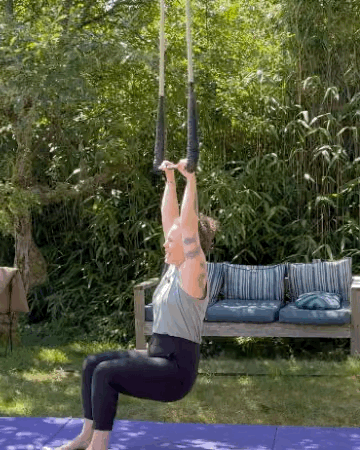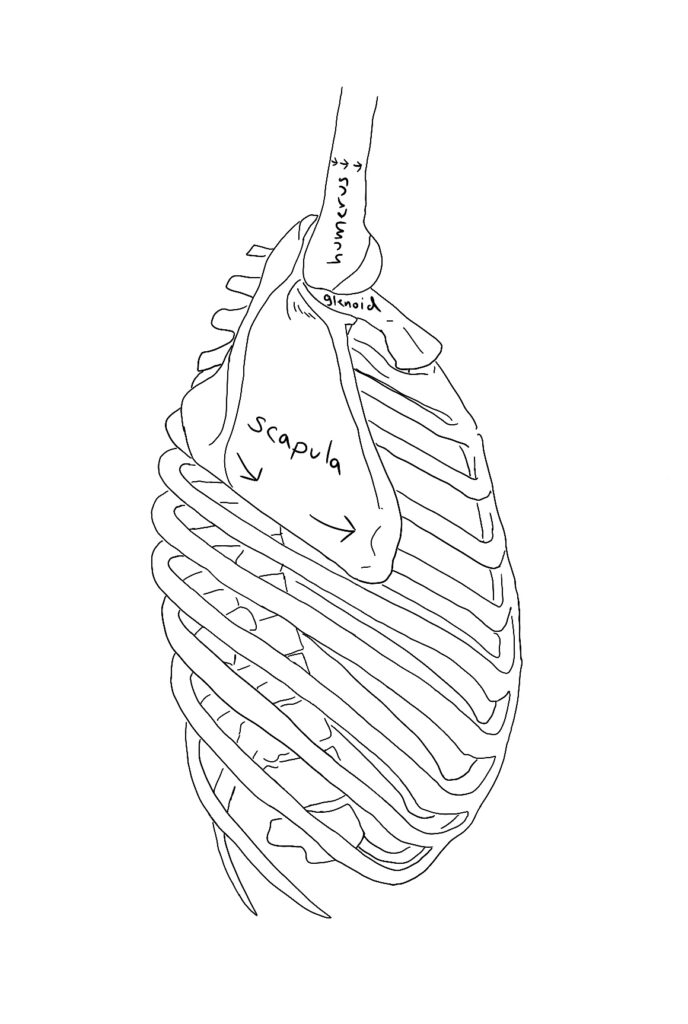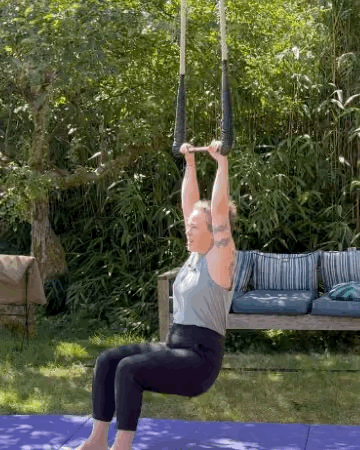This is a cue you might hear all the time! But you might also hear that it’s not actually great. Because it’s not!
But what should you do instead?
When I first started doing aerial about 5 million years ago, “shoulders down and back” was THE cue for shoulder engagement.
Particularly when executing a “shrug”.
It usually looked a little something like this:

You might look at that and think “what’s the problem?” because that’s what you’re used to doing!
Sadly, this movement is not teaching your body great engagement and support for the shoulders. And it could contribute to unfortunate things like shoulder impingement long term.
But understanding WHY means a little bit of anatomy talk.
When our arms are all the way up, our shoulder blades, or scapula, should be in what’s called “upward rotation”. That means that the whole scapula rotates on the ribs, so that the glenoid fossa, which is the socket part of the shoulder joint that’s on the scapula, points upward with the humerus (the upper arm bone).
When the scapula rotates this way, they both move further away from the spine, and the bottom angle of the bone starts to move around the side of the ribs towards the armpit.
This movement is what keeps our scapula strongly connected to the ribs, and encourages external rotation in the humerus, which is going to keep the humerus strongly connected to the scapula.
Seems important, right?

The cue “shoulders down and back” is generally encouraging scapular retraction, which means pulling the scapula closer to the spine, and depression, which means pulling the scapula down towards the waist. And it encourages internal rotation of the humerus.
And those are all the opposite things from what we actually want to have happening when we’re hanging.
It also tends to push the ribcage up and forward in a way that makes it hard for the muscles the connect the scapula to the ribs to work in the way they’re designed to.
Put this all together and it’s Not Great.
What should you do instead?
So, nowadays we know that “scap wrap” is the action we’re going for in a shrug, and what we want to be encouraging when we’re hanging.
And “scap wrap” is just moving through the upward rotation and external rotation I was talking about earlier!
When we do scap wrap, it’s important that the rib cage doesn’t lift up. If anything, it should move back. This is going to make it easier for the scapulae to do their thing.
When I do it, I think about reaching my solar plexus back towards my spine, kind of like if I was avoiding someone trying to punch me.
Then I try to turn the outsides of my upper arms towards each other.

The cues that I generally use for students are “push the bar in front of you and try to touch your armpits together in front of your face.”
I might do this with my hand on the back of their ribs, and also ask them to keep moving their ribs back into my hand.
If you want to see me coach someone through this, check out this YouTube video where I break it all down!
